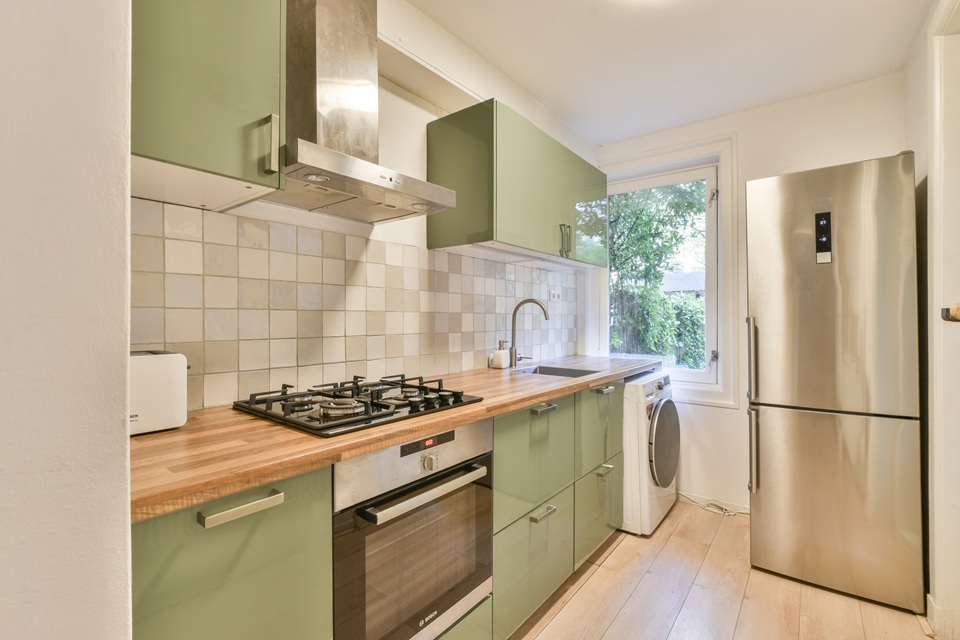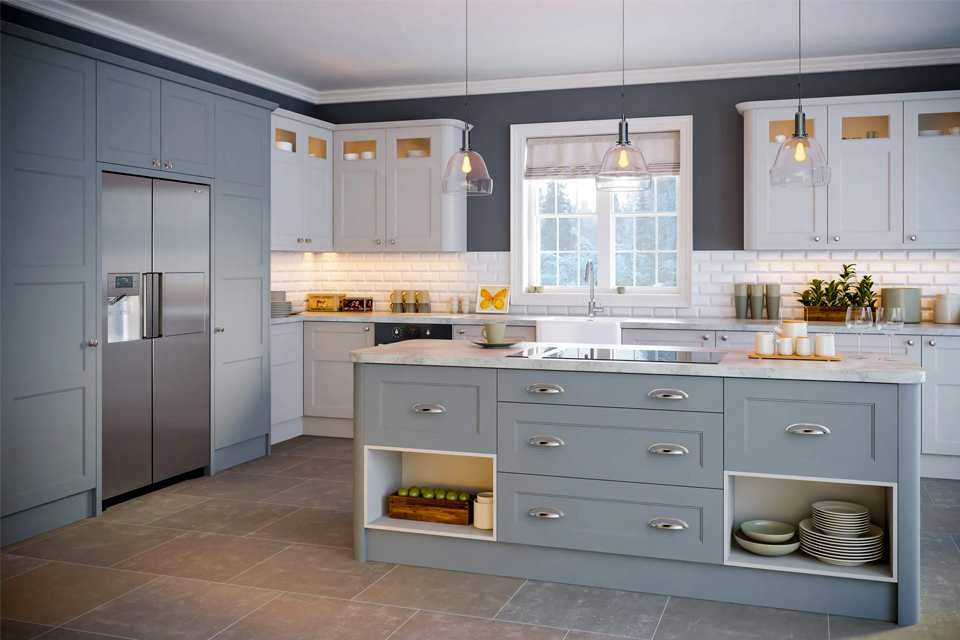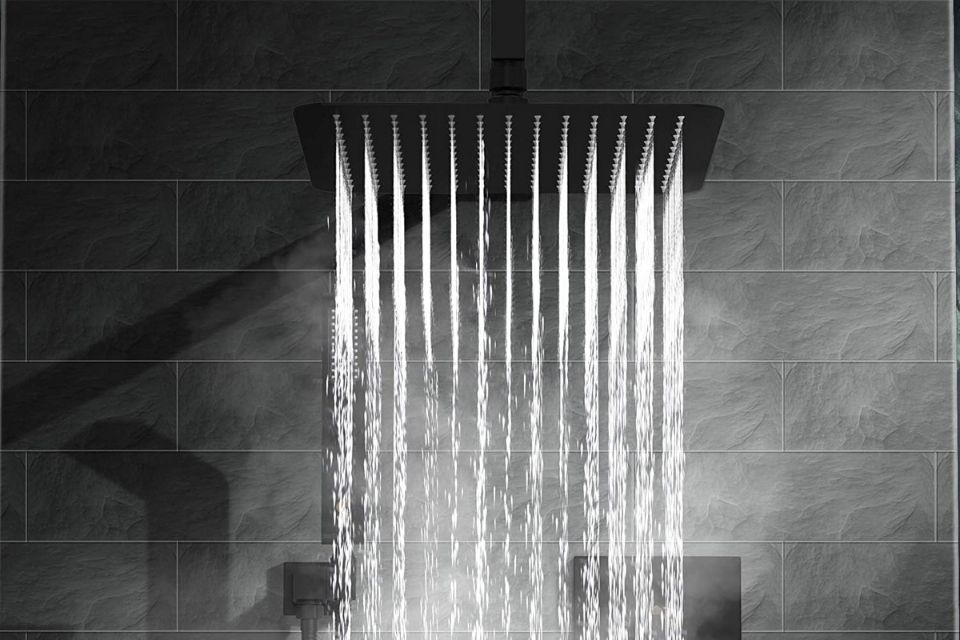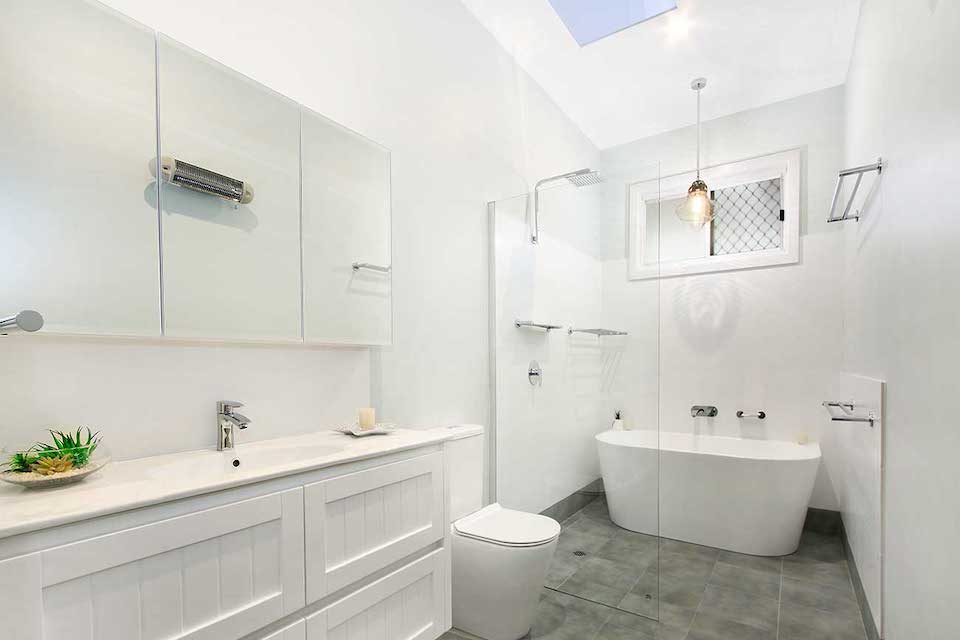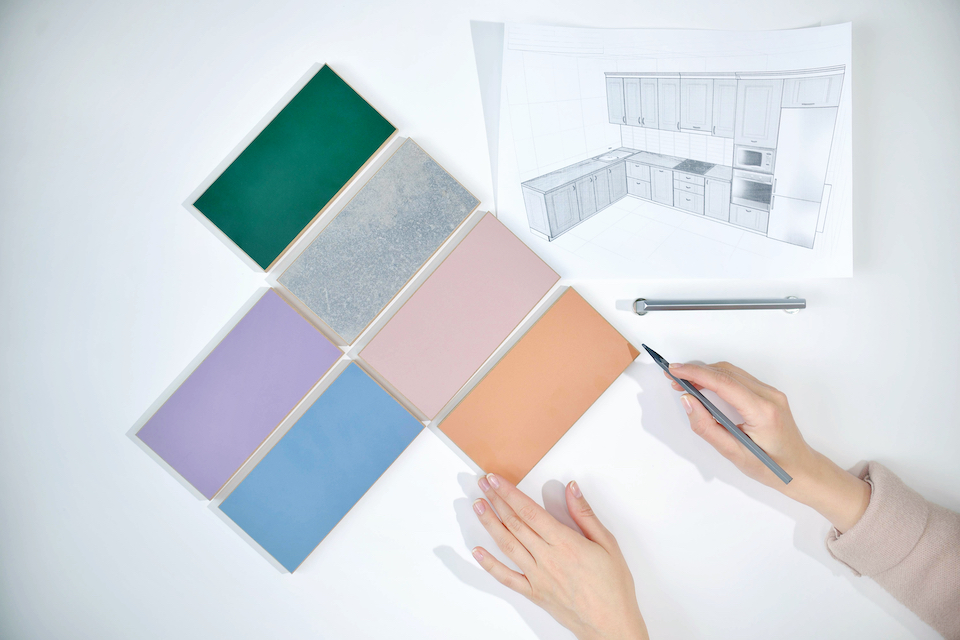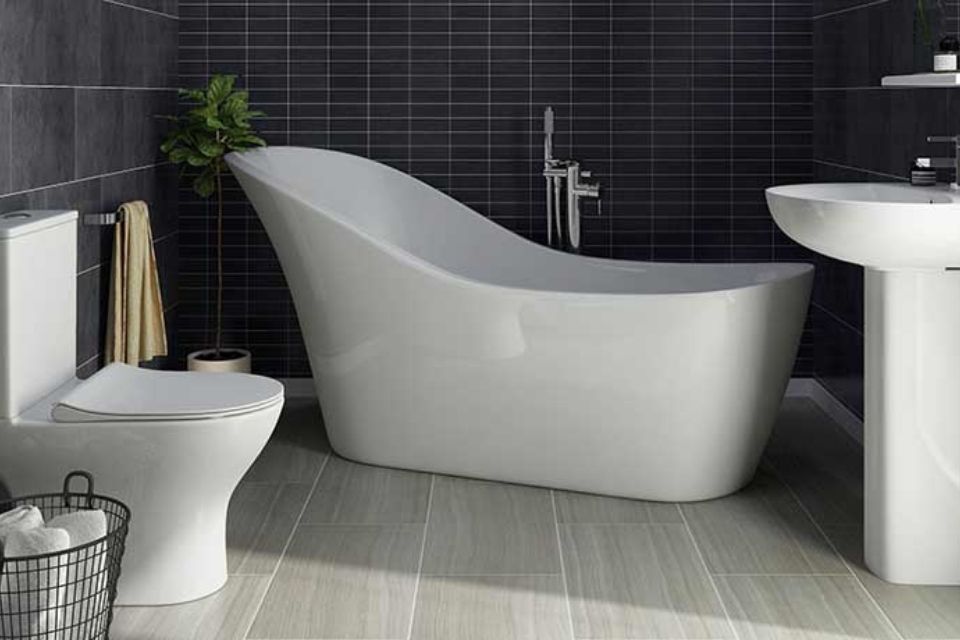If your kitchen is currently not looking as organised as you would like, the task can feel a little overwhelming, but here are 10 top tips from kitchen design expert George Burrows at HomeHow.co.uk to take away the stress and get you started on your journey to a beautiful and functional space:
Declutter
Before you start rearranging and organising your kitchen, it is a good idea to have a clear out to get rid of anything that you are no longer in need of as this will save you both time and space in the long run. A tidy space equals a tidy mind and you won’t be able to achieve this with endless unnecessary items lying around.
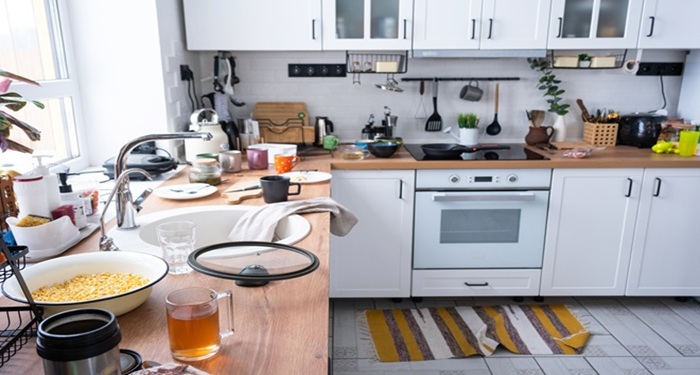
Working methodically and focusing on one area at a time, declutter countertops, shelves, and cupboards, removing anything that you know you will not use again. Throw away any outdated food and consider getting rid of any equipment that you have collected multiples of over time such as bottle openers and whisks.
Consider the Layout of Your Kitchen
When arranging your kitchen cupboards, take some time to think about the layout of the rest of your kitchen as this will make a big difference to what storage will work best within the space both functionally and aesthetically.
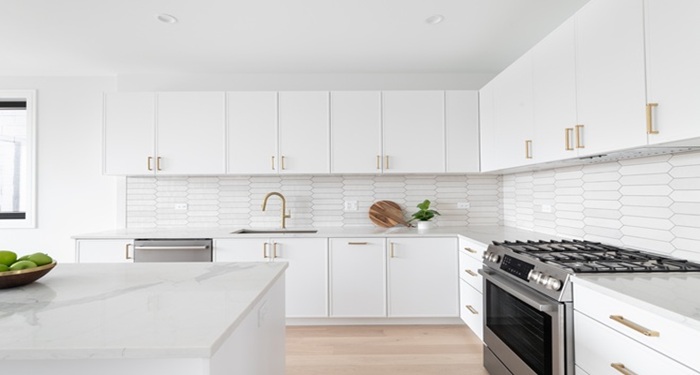
If you have cupboards that are in harder to access places such as towards the back of your kitchen or in corners, consider placing bulkier and less commonly used items there. If your kitchen is small and short on cupboards, you may need to consider how you can utilise your worktops and shelves to create extra storage space.
Group By Function
When it comes to your kitchen utensils and appliances it is useful to group items with similar purposes together so that you know exactly where they are when you need them. When organising your cupboards, group items in to sets of what they are used for such as washing, prepping, cooking, baking, etc.
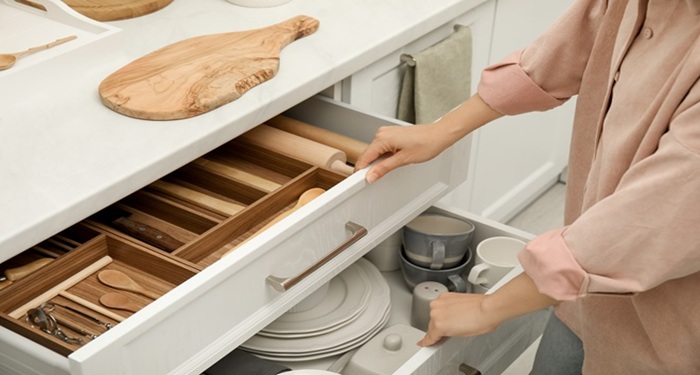
This is also a good strategy in terms of foodstuff. Obviously certain kinds of foods will already have their place in the refrigerator or freezer but for the rest such as spices, tins, cans and dry foods we should be sorting them in to categories for easy access rather than just piling them all into one space together.
Prioritise By Use
As well as grouping items in terms of the function they will serve, it is useful to consider how often you are actually going to use them. Before putting things away split them up into groups based on whether they will be used every day, once a week, or once a month or less.
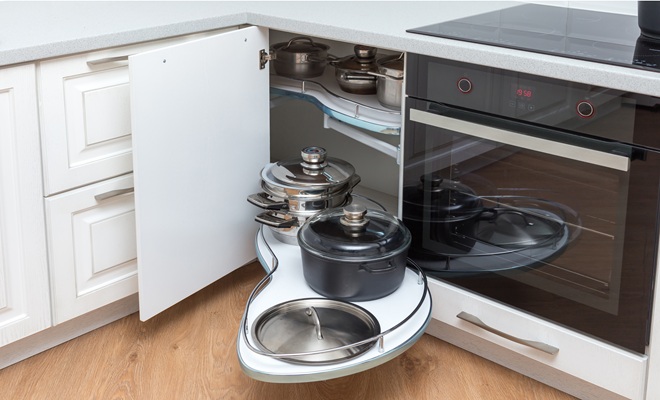
The frequently used items will need to be stored in easier to access places whereas the less often used items can go towards the back of cupboards or on higher shelves. Larger items may need to be considered separately so that you can decide where they will best fit in to cupboards later on.
Use Drawer Organisers
As well as your cupboards, drawers can be extremely useful for storage, particularly for smaller items such as cutlery and utensils. They can, however, easily become very untidy making it tricky to find the items that you need to use so it is important to keep them well-organised.
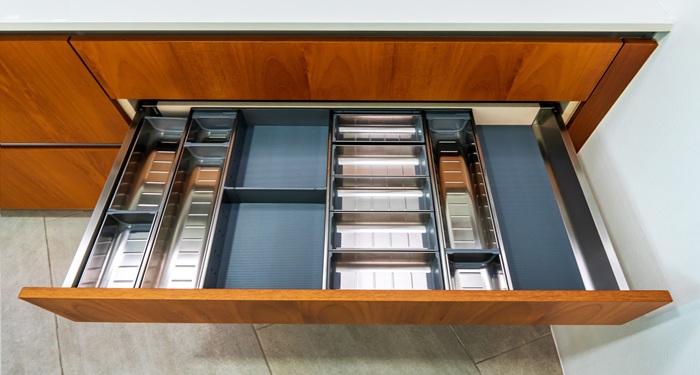
Drawer dividers and organisers can be directly inserted into your drawers to keep utensils in their designated space. You can also find these excellent resources for deeper drawers to assist you in organising and stacking larger items such as crockery and saucepans.
Make Use of Jars and Boxes
Decanting dry foods such as rice, pasta, cereal and oats into large glass or plastic storage jars will save space, keep them neater and allow you to see exactly how much of each you have left. Airtight containers will also help the food to stay fresher for longer than it would if it remained in the original packaging.
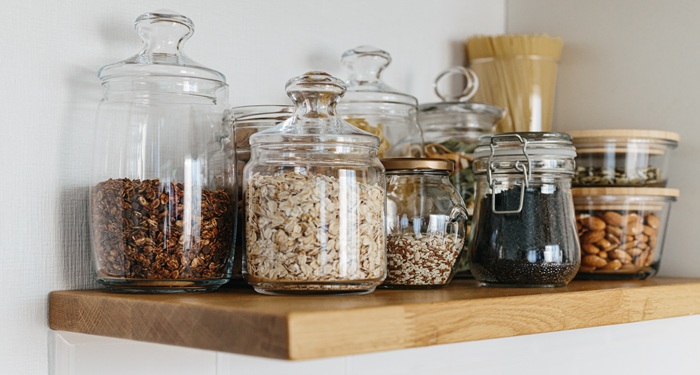
Boxes are also an excellent idea for neater storage, and you can place your jars, other food packets and fresh produce inside of them. You can purchase them in a variety of styles and materials such as plastic, wood and wicker – which you choose depends on your personal taste and kitchen aesthetic.
Utilise Wall Space for Storage
Particularly in smaller kitchens, we may need more storage space than our cupboards, drawers and worktop areas allow for. Wall panel organisers will make use of vertical space and offer an innovative tidying solution for items such as utensils, knife racks and kitchen towels.
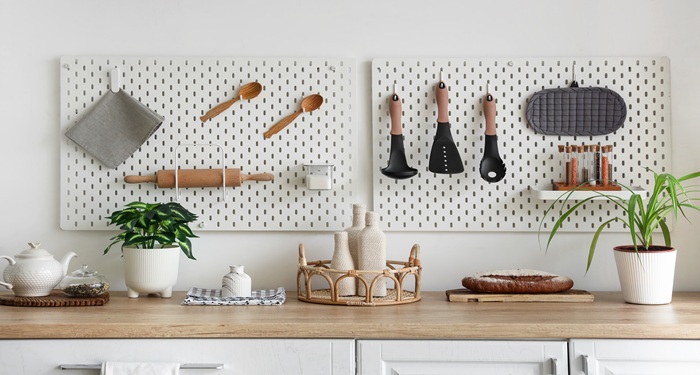
For narrow spaces you can also install spice and beverage racks. These fittings are a great way of keeping all of your herbs and spices together in a neat and easy to access order and for storing bottles that would otherwise take up a lot of room in a cupboard.
Always Put Things Back in the Same Place
There is little point in putting all of the work into organising your kitchen into a beautiful and practical space just to fall back into old habits and allow it to become messy again. As soon as you have used an item, ensure that you put it back into its designated space to keep your storage solutions neat and help you to find them again next time you need them.
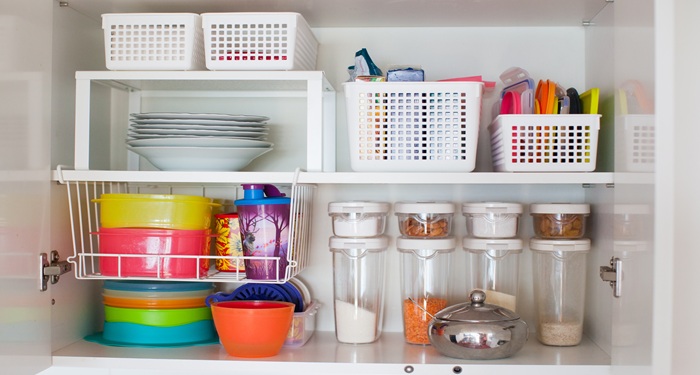
If you live with a larger family or roommates, it may be a useful idea to draw up a plan of your kitchen storage areas so that everyone knows where they should be placing items once they have used them!
Check Cupboards Once a Week
Ensure that your kitchen cupboards are neat and tidy by checking them once a week. Giving them a quick regular tidy over and getting rid of any outdated foods will save from a much bigger job later on down the line.
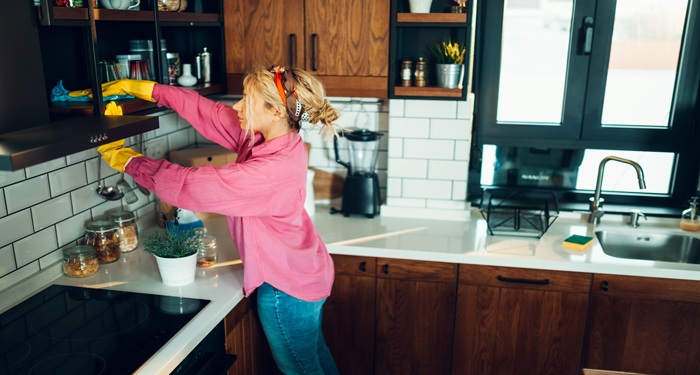
Whilst not necessarily weekly, it is also important to give your drawers and cupboards a good deep clean and disinfect from time to time. These areas can easily build up dust and grime in areas we can’t even see until emptying them, so regular cleaning will help to keep your kitchen fresh and sanitary.
Replace Items When They are Finished
Replacing items when you have used them will keep your cupboards useful and ensure that you are maximising storage space. It is a good idea to keep a list of items that you have run out of and need replacing, particularly for staples such as spices, rice and pasta which we tend to keep in at all times.
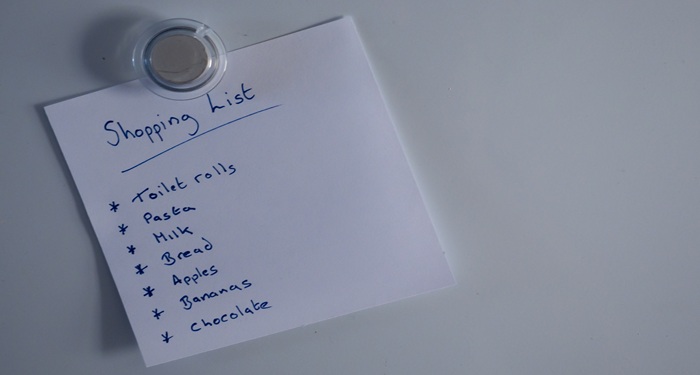
Doing this will ensure that the next time you come to showcase your culinary skills you have all of the ingredients you need to hand and won’t need to make an inconvenient last minute shopping dash!
Final Thoughts
Getting started with any organisation task is always the hardest part, especially if a lot of clutter has built up over time. It is, however, incredibly rewarding and once completed all you need to do is make sure the area stays as tidy as you have made it.
By organising your kitchen area, you will gain a real sense of accomplishment and can enjoy your evenings cooking and baking to your heart’s content in an aesthetically pleasing and functional space.

